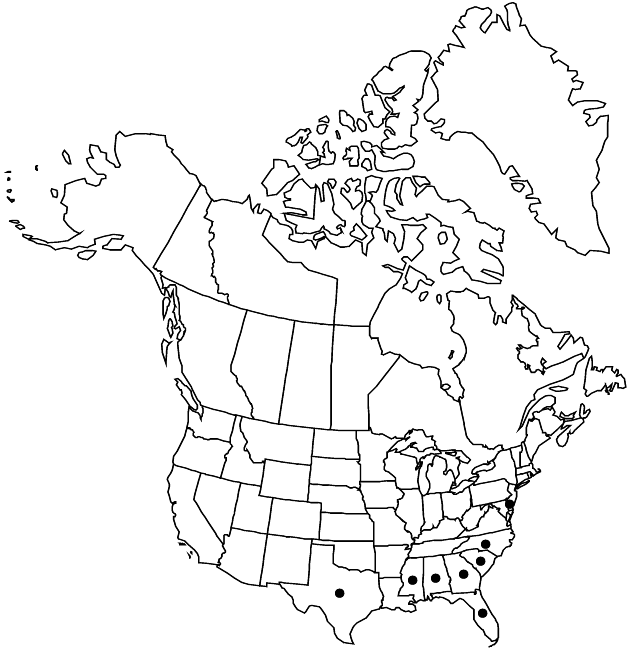Eupatorium linearifolium
Fl. Carol., 199. 1788.
Perennials, 30–100+ cm. Stems (from short caudices) single or multiple, branched at or near bases, pubescent throughout. Leaves usually opposite (distal sometimes alternate); sessile or subsessile; blades 3-nerved distal to bases, oblong to lance-oblong, 20–45 × 5–10 mm, bases cuneate, margins entire or serrate (teeth mostly proximal), apices acute, faces finely puberulent, glanddotted. Heads in corymbiform arrays. Phyllaries 8–10 in 1–2 series, lanceolate (tapering toward apices), 2–5 × 0.5–1 mm, apices rounded to acute, abaxial faces puberulent, glanddotted. Florets 5; corollas 3–3.5 mm. Cypselae 2.5–3 mm; pappi of 30–40 bristles 3–5 mm. 2n = 20, 30, 40.
Phenology: Flowering Jul–Sep.
Habitat: Dry, sandy soils, pine and oak woods, old fields
Elevation: 20–100+ m
Distribution

Ala., Del., Fla., Ga., Miss., N.C., S.C., Tex.
Discussion
Plants treated here as Eupatorium linearifolium were long treated under the name E. cuneifolium; the latter name was superfluous when published (K. N. Gandhi and R. D. Thomas 1991). Because there appears to be a continuous range of variation between diploids that were referred to by V. I. Sullivan (1972) as E. cuneifolium and the series of putative hybrids (with E. hyssopifolium suggested as the other parent) that she called E. linearifolium, these are combined here. The tendency for the plants to branch at or near the bases is distinctive within Eupatorium.
Selected References
None.
Lower Taxa
"fine" is not a number.